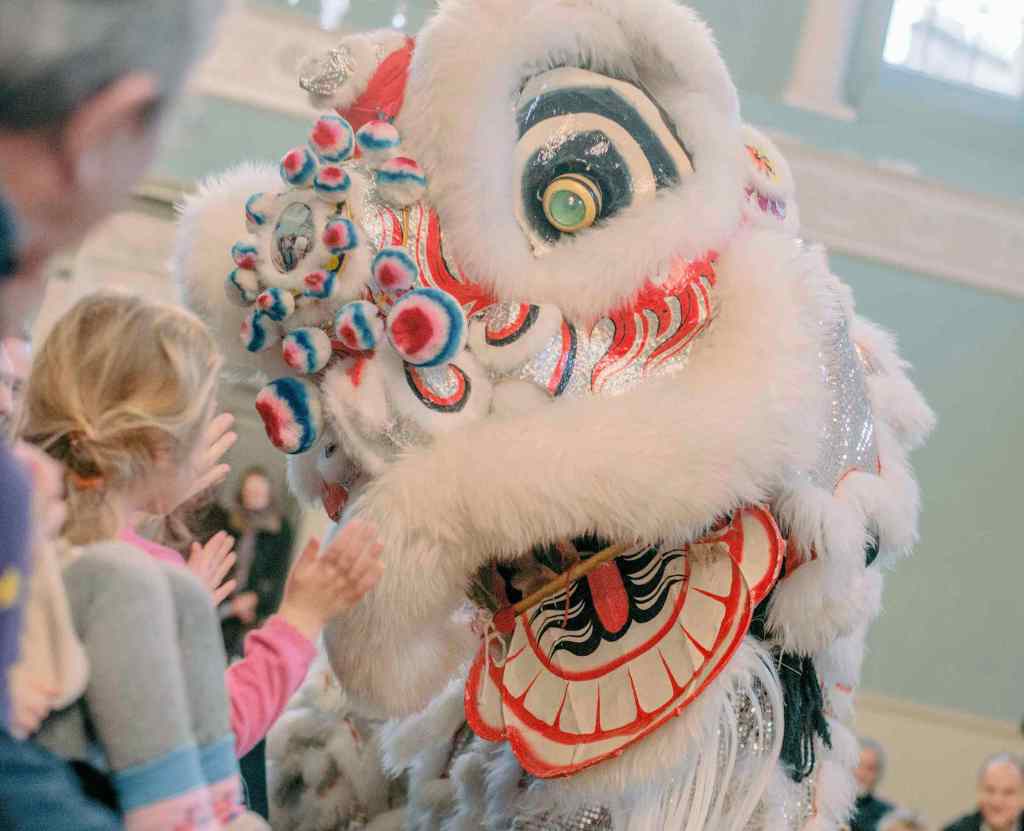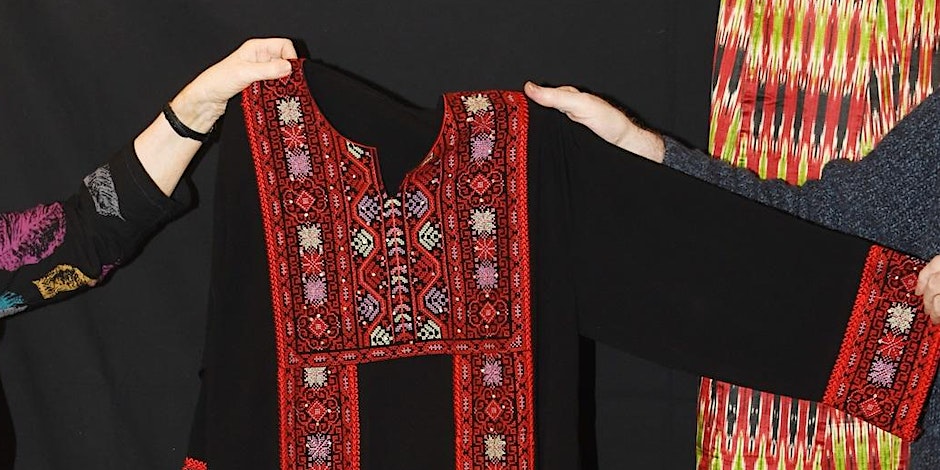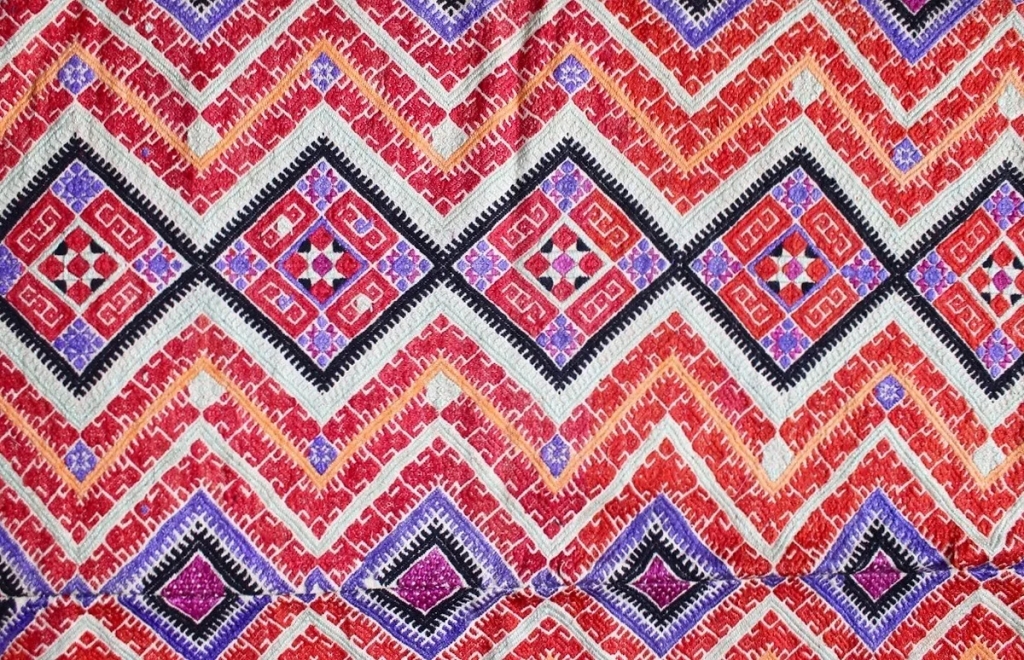
This Saturday the Museum of Asian Art in Bath will be celebrating the Year of the Dragon, with a variety of family-friendly events.
“A traditional Lion Dance will lead you into the beautiful Bath Assembly Rooms for a day of creative workshops, chopstick challenges, and more. Look to the stars in our pop-up planetarium, where the team from The Herschel Museum of Astronomy will explore fascinating stories about the cosmos linked to the dragon and the moon (book here). Listen to a concert by Bath local Lydia Sun as she plays the guzheng, a traditional Chinese stringed instrument.” – Museum website

******************************
Meanwhile in Seattle celebrations of a very different culture will be taking place. The Seattle Art Museum will be hosting Knowledge, Transmission, and Embodiment in East Javanese Performing Arts as part of their Saturday University sessions. Please note that this is an in-person event.
“This presentation will explore the spiritual knowledge, or ilmu, that performers imparted on UW professor Christina Sunardi while conducting fieldwork on gamelan music and dance in Malang, east Java from 2005–2007…….. Through their beliefs, practices, and verbal discourse about ilmu, musicians and dancers in Malang maintain and produce local systems of knowledge, transmission, and competence. The presentation will be accompanied by a musical performance by Ki Midiyanto.”

******************************
Saturday 10th February is a very busy day, as the Textile Museum and New England Rug Society are co-hosting an online talk entitled Reconstructing the Chehel Sotun Carpet. Maggie Squires of the Courtauld Institute of Art will be the speaker, and will trace and reconstruct the history of this massive carpet. It was “woven in the late 17th century for the Chehel Sotun palace in Isfahan, Iran. In the late 19th century, the carpet was cut up and sold as fragments, which are now distributed across at least eleven different collections across the world.
Squires’ research engages with digital methods to virtually reconstruct the complete carpet based on archival evidence, historical descriptions and physical examination of the fragments. The reconstruction has implications for our understanding of Safavid palaces and their furnishings in the 17th century, as well as artistic exchanges between Iran and the Deccan during this time.” – Museum website
The talk begins at 1pm EST, which is 18:00 GMT and you can register for it here.

******************************
A new exhibition opened on 1st February 2024 at the Nickle Galleries in Calgary and runs until 28th March 2024. Kyrgyz Textiles: Introducing the John L. Sommer collection is curated by Michele Hardy and builds upon the travelling exhibition Reeds and Wool: Patterned Screens of Central Asia that the gallery hosted back in 2009.
The collection of the late Dr Sommer, including felt textiles and carpets, reed screens, and most importantly his notes and photographs, was recently donated to the Nickle Galleries. On Tuesday 13th February at noon Michele will lead a tour of this exhibition. Click here for more details.
To learn more about reed screens in Central Asia read this post in my new blog.

******************************
The OATG AGM takes place on Saturday 17th February, and members should have already received their invitations to this event. The formal proceedings begin at 14:00 and will be followed by a Show and Tell session, which is always good fun, provoking a stimulating discussion. This is also open to non-members for a small fee. Check out our Events page for more details.

******************************
On Wednesday 21st February the Oriental Rug and Textile Society (London) will host a lecture by Martin Conlan of Slow Loris. His subject will be Tribal Wedding Blankets of South West China.
“Wedding blankets are often intricately woven, embroidered or resist-dyed decorative panels attached to the top of a quilt cover. They play a central role in the marriage customs and traditions of many communities in southwest China. For the scores of tribal groups inhabiting the remoter areas of the region, preserving their cultural identity has been a perennial challenge through historical transformations.” – ORTS
Martin will also be taking some examples to show attendees. This is free for ORTS members, but guests are also welcome for a small fee. For full details click here.

******************************
Also taking place on 21st is a Zoom lecture by Patricia Bjaaland Welch, hosted by the Museum of East Asian Art. Her subject will be Here, There May Be Dragons: Symbolism In Chinese Art. This is a free Zoom talk that takes place at 12:30 GMT and you can register for it here.
“The dragon is undoubtedly the best-known symbol representing Chinese culture and folklore. But what is its origin? And what is the nature of the dragon? And when and where should we be looking for dragons? And why are there so many varieties?
With this illustrated talk by Chinese Art writer and researcher Patricia Bjaaland Welch, we will discover the many myths and truths that surround the dragon in Chinese history and art.” – Museum website

******************************
A new exhibition opens on Saturday 24 February at the Textile Museum in Washington. It is entitled Irresistible: The Global Patterns of Ikat and runs until 1st June 2024.
“Prized worldwide for producing vivid patterns and colors, the ancient resist-dyeing technique of ikat developed independently in communities across Asia, Africa and the Americas, where it continues to inspire artists and designers today. This exhibition explores the global phenomenon of ikat textiles through more than 70 masterful examples from countries as diverse as Japan, Indonesia, India, Uzbekistan, Côte d’Ivoire and Guatemala.” – Museum website

******************************
Finally, some personal news. This is my final Oxford Asian Textile Group blog as I’m standing down from my Social Media role at the AGM, but don’t worry – this blog will continue in the safe hands of our journal editor Gavin Strachan.
I’m not giving up on blogging though, so if you still want to follow my textile news and adventures, please check out my Asian Textile Studies blog. It’s quite a different style to this blog and I see them as complementary.
Thanks for your support over the past six years and farewell!
******************************